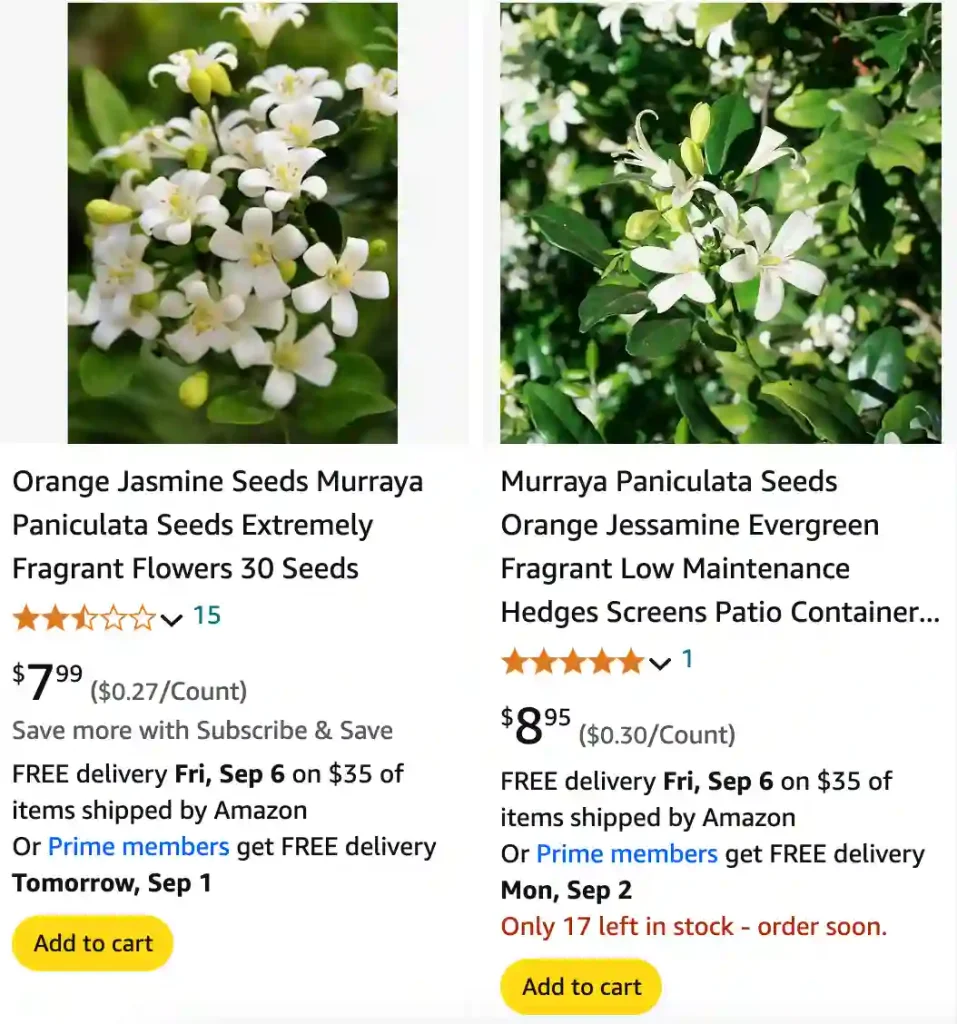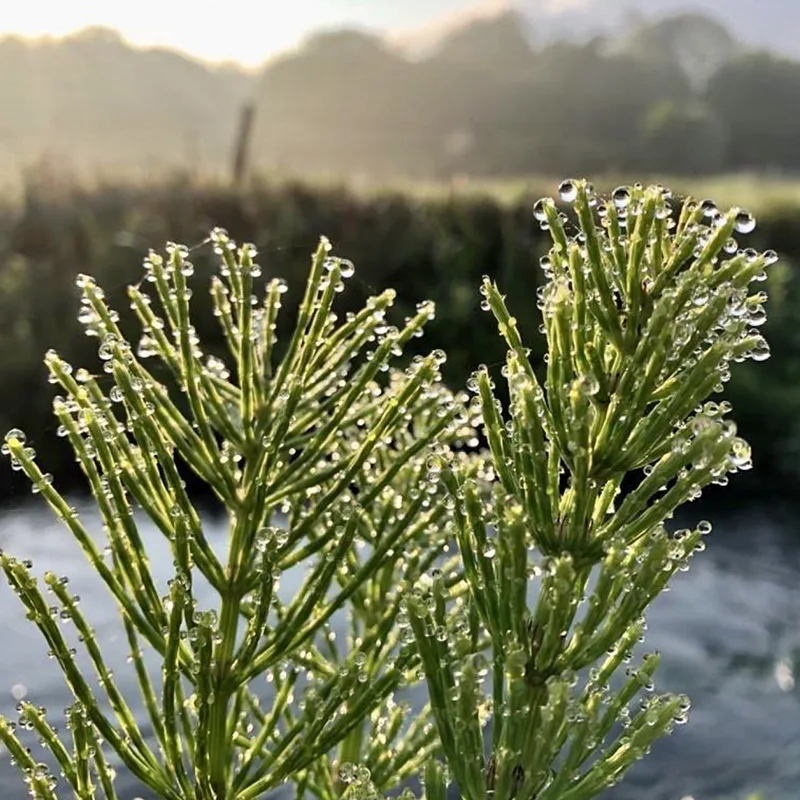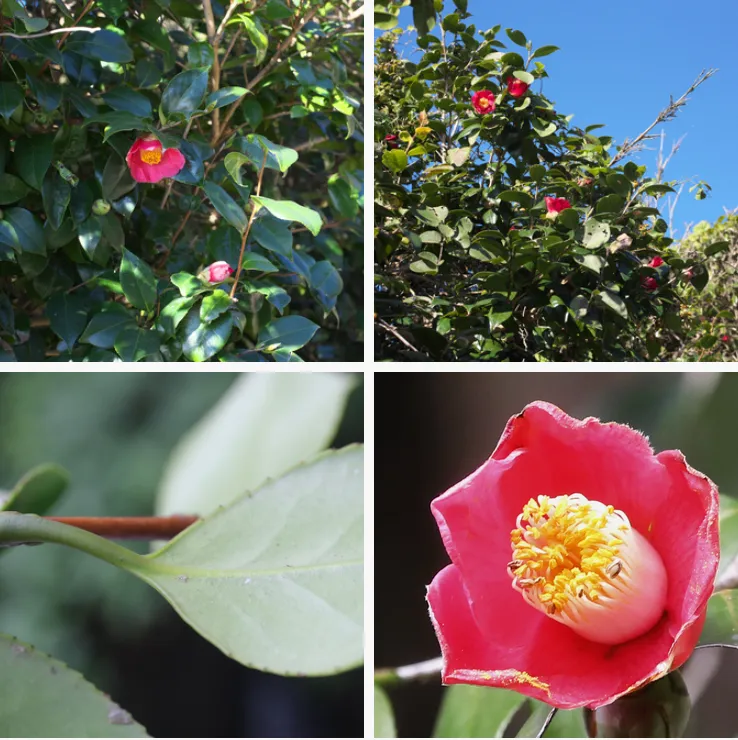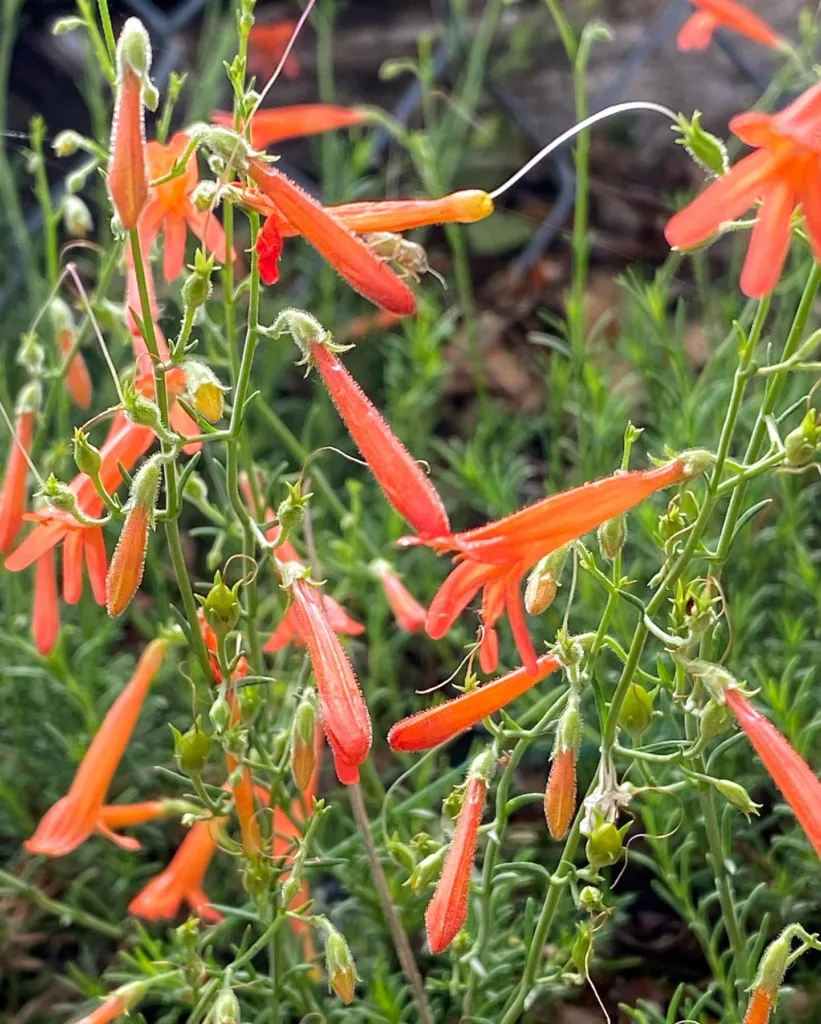
How to Grow Murraya Paniculata?
Growing Murraya Paniculata, also known as the Orange Jasmine, has been a rewarding experience for me. I’ve found that it thrives best in well-drained soil with a slightly acidic to neutral pH. Plant it in a location where it can receive full sun to partial shade, as it appreciates at least four hours of direct sunlight each day. When planting, make sure to space the plants about 3 to 5 feet apart to allow for their natural growth spread. Regular watering is key, but avoid overwatering, which can lead to root rot. I typically water mine once a week during dry periods.
9 Species in Genus Murraya
How to Germinate Murraya Paniculata?
Germinating Murraya Paniculata is a bit of a patience game. I usually start by soaking the seeds in warm water for 24 hours to soften the hard seed coat. After soaking, plant the seeds about 1 inch deep in a well-draining potting mix. Keep the soil consistently moist but not waterlogged. I’ve had the best results by placing the pots in a warm, sunny spot. Germination can take anywhere from 3 to 6 weeks, so don’t get discouraged if you don’t see sprouts right away.
How to Grow Murraya Paniculata from Cuttings?
If you prefer to grow Murraya Paniculata from cuttings, here’s how I do it. Take a 4 to 6-inch cutting from a healthy parent plant, making sure to cut just below a leaf node. Remove the lower leaves, leaving only a few at the top. Dip the cut end in rooting hormone to promote faster root development. Plant the cutting in a small pot filled with a mix of perlite and peat moss. Keep the soil consistently moist and cover the pot with a plastic bag or dome to create a humid environment. Roots should develop in 4 to 6 weeks.
How to Propagate Murraya Paniculata?
Propagation of Murraya Paniculata can be done through seeds or cuttings, as described above. Another method I’ve used is air layering. For this, make a small wound on the stem, apply rooting hormone, and wrap it with moist sphagnum moss. Once roots have developed, cut below the root ball and transplant it into a pot.
Is Murraya Paniculata Fast Growing?
Yes, Murraya Paniculata is relatively fast-growing. Under optimal conditions, I’ve seen it grow 1 to 2 feet per year. It’s a great choice if you’re looking for a plant that will quickly fill out your garden or hedge. However, growth rate can vary depending on factors like soil quality, water, and light availability.
How Fast Does Murraya Paniculata Grow?
In ideal conditions, Murraya Paniculata can grow about 1 to 2 feet annually. It’s a fairly vigorous grower, but keep in mind that growth speed may slow down during colder months or if the plant is under stress.
How to Prune Murraya Paniculata?
Pruning Murraya Paniculata is essential to maintain its shape and encourage dense growth. I typically prune after the flowering season to remove any dead or damaged branches. Cut back the plant by about one-third to promote new growth. Regular pruning also helps manage the size and shape, making it easier to maintain as a hedge or decorative shrub.
Does Murraya Paniculata Have Invasive Roots?
Murraya Paniculata doesn’t typically have invasive roots, but it can spread through its growth. It’s important to keep an eye on its expansion, especially if you’re planting it near other plants or structures. Regular pruning can help manage its growth and prevent it from becoming a nuisance.
Is Murraya Paniculata Poisonous to Dogs?
Yes, Murraya Paniculata is toxic to dogs. It contains compounds that can cause gastrointestinal upset, including vomiting and diarrhea, if ingested. I make sure to keep my dogs away from the plant and choose pet-safe alternatives for areas where they have access.
How to Strike Murraya Paniculata?
Striking Murraya Paniculata involves a similar approach to propagation from cuttings. Select healthy stems, prepare them with rooting hormone, and ensure they are kept in a humid environment until roots develop. This method works well for expanding your collection or sharing plants with others.
What to Plant With Murraya Paniculata?
Murraya Paniculata pairs beautifully with other tropical plants, such as hibiscus, bougainvillea, and various types of palms. These companion plants share similar care requirements and can complement the lush, dense foliage of Murraya Paniculata. Additionally, they can enhance the visual appeal of your garden with their vibrant colors and textures.
Can You Grow Murraya Paniculata Indoors?
While Murraya Paniculata is more commonly grown outdoors, it can be grown indoors if you provide it with sufficient light and space. Place it near a south-facing window where it can receive plenty of indirect sunlight. Ensure good air circulation and keep the humidity level up to mimic its natural tropical environment.
How to Care for Murraya Paniculata?
Caring for Murraya Paniculata involves regular watering, appropriate fertilization, and periodic pruning. I find that applying a balanced, slow-release fertilizer in the spring helps promote healthy growth and blooming. Additionally, monitor for pests like aphids and scale, and address any issues promptly to keep your plant healthy.
Murraya Paniculata is a versatile and attractive plant that can enhance any garden or indoor space with its fragrant flowers and lush foliage. Whether you’re growing it from seed, cuttings, or as a mature plant, following these tips will help you maintain a healthy and thriving Murraya Paniculata.
If i die, water my plants!



